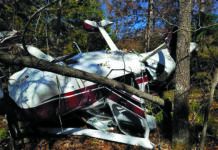CIRRUS, SUCCESS AND THE LIDLE CRASH On the safety front, Cirrus Design must sometimes feel like it takes three steps forward and two back. In early October, when New York Yankees pitcher Cory Lidles SR20 punched a hole in a Manhattan apartment building, the company got a thorough wash-and-rinse in the news cycle before being nudged off the front page by more sensational news. (A sex scandal and bad news from Iraq.) Having celebrities own the airplane you manufacture cuts both ways. Its terrific when they turn up on the cover of
Two of the three crashes appear to be strongly weather related and the first the Lidle crash may be too, if its ultimately determined that a strong easterly wind was a factor in the airplanes improbable attempt to complete a 180-degree turn in the narrow confines of the East River corridor.
Obviously, this is no cakewalk for Cirrus. Three fatals in as many weeks materially bumps up the types fatal accident rate at a time when its accident history was settling out to be about average after a spate of early crashes. The daily press made a half-hearted stab at linking the Lidle crash to something dreadfully wrong with the airplane, but those of us in GA know the ink wont stick to the page on that one.
Whats interesting to me, however, is how these bunched up accidents the recent run isn’t the first seem to focus a bizarre, brittle light on how Cirrus continues to be a victim of its own success. Stipulating here that the Cirrus line is potentially as safe and maybe safer than anything flying, I am reminded of something I heard Alan Klapmeier say at Oshkosh a couple of years ago.
Part of the Cirrus mission, he said, was to disabuse the world of the notion that you need some special DNA to fly an airplane. Im beginning to wonder if Cirrus has proved just the reverse. Pilots who survive the rigors of general aviation out there on the margins in bad weather, demanding airspace, long flights from home, high density altitude need a keen sense of survival to understand when to say no, Im not able to do this. Call it DNA or sixth sense or just common sense, but I submit that not everyone has it. Maybe it can be taught to most would-be pilots who really want to learn it, but I believe that some small portion of people who wish to fly cant or wont learn it. And some number of them are attracted to the Cirrus because of its core selling point: the parachute.
I like the parachute. I think its an excellent idea whose time has come. And kudos to Cirrus for making it a real, proven safety feature of the airplane. But as long as Cirrus and BRS continue to push it, the airplane will attract a slice of owners who no one wants to admit have no business flying airplanes and whose accident rates will vastly overrepresent their small numbers. Im not suggesting Cirrus shouldnt sell the parachute, just that progress sometimes comes with a harsh price tag.
I don’t know how you get inside the heads of pilots with non-existent survival instinct. Maybe a personal letter from the guys who made the airplane will help, assuming you can get them to open the envelope. Whats scary is that, as an industry, we had better figure this out soon because were about to put these very same guys into their own personal jets. Parachute or not, thats hardly a comforting thought. -Paul Bertorelli




